- Home
- Diane Fanning
Written in Blood Page 5
Written in Blood Read online
Page 5
8
The viewing for Kathleen was scheduled from 5 until 8 P.M. at the Howerton—Bryan Funeral Home on the evening of December 12. Fred Atwater was there, standing in the background, ready to help Caitlin in any way he could.
Kathleen lay in her coffin wearing a black dress and pearls—an elegant woman even in death. On her pillow was a simple gold cross on a chain. Clayton, at Candace’s request, had purchased it at a jewelry store for his stepmother.
Next to Kathleen was a visitors’ book waiting for entries. Earlier that day, Candace asked Michael to write a note on the front page. He inscribed: “The next book will be about love—requited love—and will be about you, of course. Love, Mike.”
Standing on an easel, a collage of photographs of Kathleen—with Mike, with the five children and posing alone—greeted those who came to pay their last respects.
Mike was supposed to meet Candace at the viewing at 4:30 that afternoon. Steve and Cynthia were picking up Kathleen’s mother, Veronica, along with the friend who traveled with her, at the airport. Mike had told Candace he would be at the funeral home to greet his mother-in-law.
Candace felt lost when people started to arrive. They were Kathleen and Michael’s friends and she did not know them at all. Michael had promised her that he would be there.
But Michael Peterson apparently did not plan to attend his wife’s viewing. He was at home in his underwear at 6 P.M. when seven members of the Durham Police Department arrived on his doorstep.
After discussions with the medical examiner and the district attorney, Investigator Art Holland reached the conclusion that there was more evidence in the house that needed to be seized. Bill Peterson answered his knock. Holland read the warrant to him.
Officers went upstairs to round up any people on the second floor. Michael Peterson was in his bedroom. “Do you mind?” he asked. “I am getting dressed to go see my dead wife in a coffin.” Martha Ratliff was retrieved from another room and escorted downstairs. She left the house and went to the funeral home.
When the viewing was over, Candace clipped locks of Kathleen’s hair and placed them in envelopes to preserve them for family members. She removed her pearls to give to Caitlin. She put the gold cross and a rose in her sister’s cold hands. The lid of the casket was lowered.
By telephone, attorney Kerry Sutton advised her client, Michael Peterson, to remain in any room they were searching if he could. She attempted to enter the house herself, but was rebuffed by the police.
The search was completed at 8 P.M. Among the items seized were three computers, blood swabs from the kitchen couch, a copy of the O. J. Simpson Notebook, a hand grenade now serving as a paperweight—Mike’s souvenir from Vietnam—and a document granting power of attorney to Todd and Clayton and allowing them to appoint another in their stead.
At 9:30 that night, Michael, Bill, Todd, Clayton, Margaret, Martha and Caitlin made a short pilgrimage to the funeral home. Michael told Caitlin that the Durham Police Department had it in for him. He warned her that things might get very ugly. The police, he told her, would concoct a story as outlandish as possible. He also made Caitlin aware of the condom found in his bedroom. He said that he thought the police might use it to say he and Kathleen had a perverted sex life and were having orgies in the house. Later, Todd told police that the condom belonged to one of his friends who had sex with a girl in Kathleen and Mike’s bed.
The next day, Candace and Steven both had to be at the funeral home early. Cynthia stayed with her mother-in-law and her friend to wait in the lobby for Michael to arrive in the limo. When the car pulled up, Michael leaped out. Although he had made no attempt to contact Steve or Cynthia in the last two days, he now grabbed Cynthia’s arm and spoke to her for the first time. “Where’s Ronnie?” he asked, referring to his mother-in-law by her nickname.
Cynthia pointed to Veronica. Michael threw himself at her feet, laid his head in her lap and sobbed.
At 11 A.M. on Thursday, December 13, three hundred family members and friends of Kathleen Peterson walked the sidewalks, dampened from an overnight downpour, and entered the Duke University Chapel. They came to mourn the death of one taken so young, and to celebrate the life of one who had given so much. Kathleen’s casket was flanked by an army of poinsettias placed in the chapel for the holiday season and buried in a mass of red, pink, yellow and white roses. Later, when Michael received the bill from the florist, he fired off a nasty email to Lori complaining about her extravagance.
Throughout the service, the Hunt and Peterson families sat at the front of the chapel. Fred Atwater sat in the back with his wife—inconspicuous, but available for Caitlin.
Candace distributed copies of “Ascension,” a stirring poem she had first seen at the funeral of a neighbor’s child who died of cancer. Candace believed, and the media reported, that Emily Dickinson was the author of the piece. This myth had followed the much-loved poem from funeral home to cemetery across the country. In actuality, Colleen Hitchcock, a suspense novelist, wrote it after her mother died of cancer.
Maureen Berry read a thank-you note written by her and four other friends of Kathleen. She called her the “48-hour-a-day” woman. “We love you,” she said. “You will be missed. You lit up our lives. Now, Michael has lost a soulmate and we have gained an angel.”
Flanked by Todd and Clayton Peterson and Margaret and Martha Ratliff, Caitlin Atwater remembered the lullabies her mother sang to her, and shared the advice her mother gave her: “Life is too important to waste a single moment.” Fred’s heart broke as he watched his child deliver the eulogy she should not have had to give for at least another thirty years.
After the service, as the pallbearers carried Kathleen’s coffin from the chapel, Michael Peterson stood at the top of the steps holding the hand of his departed wife’s mother, 81-year-old Veronica Hunt. He turned to her with tears in his eyes and wrapped an arm around her. “I’ve always called you by your first name, Veronica,” he said. “But now may I call you Mom?”
By peculiar coincidence, Todd Peterson, who always called his stepmother Kathleen or nothing at all while she was alive, now referred to her exclusively as “Mom.”
That same week, Ron Guerette, at David Rudolf’s behest, arrived at 1810 Cedar Street to inspect and secure the scene. He unscrewed the plywood and examined the blood-spattered staircase. He installed a hinge and padlock at the top of the stairs. He screwed the plywood back in place and used a saw to cut three louvers at the top and bottom to allow airflow into and out of the cloistered space.
At the medical examiner’s office, the neurological examination of Kathleen Peterson’s brain tissue began. Dr. Thomas Bouldin first examined the dura meninges—the layer that provides direct support to the brain. It is located beneath the strong fibrous covering that connects to the skull.
Multiple sections of the brain were stained to enhance abnormalities. A microscopic examination revealed the presence of rare red neurons. This unusual condition was accompanied by early acute ischemic necrosis—or cell death—in both the cerebrum and the cerebellum.
These red neurons revealed an ugly truth about the death of Kathleen. Because of their existence, it was apparent that she did not die quickly—it took her two to four hours. She lay on the stairs all that time with the blood draining from her body. As she bled out, the blood flow to her brain decreased, depriving it of oxygen. Without this vital nutrient, a gradual process of death began. As her brain cells died, the red neurons were born. The process was slow. And it was widespread. The time it took the red neurons to develop provided plenty of opportunity for Michael Peterson to get help for his injured wife. Two to four hours was more than enough time for premeditation to exist.
9
On the sixth floor of the Durham County Courthouse, the results of the neurological analysis spurred Jim Hardin to make preparations to call a special grand jury. Superior Court Judge Ronald L. Stephens approved his request.
The grand jury convened at 9:48 A.M. on Decem
ber 20, 2001. They heard testimony from three witnesses: Dr. Deborah Radisch, Agent Duane Deaver and Investigator Art Holland. At 2 P.M., they returned a true bill of indictment for first-degree murder against Michael Iver Peterson. “[ …T]he defendant named above unlawfully, willfully and feloniously and of malice and aforethought, did kill and murder Kathleen Hunt Peterson.”
Fifty minutes later, Michael Peterson got into his tan Jaguar and led a caravan of four other vehicles from his house into downtown Durham. In the parking lot across from the jail, he gathered his entourage around him: Todd, Clayton and Bill Peterson, Martha and Margaret Ratliff and Thomas Maher, David Rudolf’s co-counsel on this case. The circus-loving defense team had, of course, alerted the media, and a grand gaggle of reporters with cameras and thrusting microphones greeted the somber troupe as it crossed the street and entered center stage.
Peterson paused before the press and proclaimed his innocence with all the drama of a tragic Shakespearean figure: “Kathleen was my life. I have whispered her name in my heart a thousand times. She is there and I can’t stop crying.” They were beautiful words, but they were stolen from Colleen Hitchcock’s poem, “Ascension,” and altered to suit his purposes. They lay like lead on his lips.
As Michael exited stage left, Thomas Maher told the gathered media that his client was the victim of overzealous prosecutors. “We’re very disappointed, obviously, that he’s been charged—particularly disappointed that the D.A. decided to rush something we don’t think is warranted.”
Mike disappeared inside the jail and sat down in the waiting area with his legs crossed—a Bible and a pair of tennis shoes beside him. Investigator Holland greeted the speechless, dazed defendant. Mike mumbled answers when necessary, but otherwise did not speak as Holland jotted down the everyday identifying characteristics of Peterson on the arrest report.
Holland escorted his charge into the detention area. Mike emptied his pockets on the counter, leaving $100 in cash to be logged into the ledger. Sergeant Vicky Menser checked the felony warrant to ensure all was in order and then processed the prisoner.
She rolled his fingers on an inkless plate that sat by the computer. It performed a laser scan that unfolded the prints on the monitor of the live scan computer as she progressed. The computer assigned a booking number to Michael Peterson.
The next step in the process was taking Mike’s palm prints. These were done the old-fashioned way. Menser pushed the fingers of his hand back and applied ink on his palm. She pressed it onto the back of his felony card, applying enough force to flatten his hand on its surface.
She rolled his right thumb with ink and mashed it down into the supplemental sheet four times. Mike’s booking photos were taken next. Three poses were shot as Mike called out his full legal name.
The new prisoner’s money, herringbone jacket and pants were put into property bags. Mike now wore a regulation orange jumpsuit. In this sartorial splendor, Holland escorted him to the magistrate’s office. There, they read the charges to him.
Michael Peterson, decorated Vietnam War veteran, accomplished novelist and political aspirant was locked behind bars. All he had to keep him company were his Bible, his tennis shoes and his memories of December 9, 2001.
MICHAEL PETERSON
“Somewhere along the line, short going of 22 years, I’ve forgotten about individual responsibility–integrity. I’d like to think that I knew it once.”
–Michael Peterson, 1965
10
Eugene Iver Peterson spent his early years in Golconda, Nevada, just sixteen miles east of Winnemucca. It is a desolate area where mining is the predominant industry. He was raised on a ranch that was both a resort for travelers seeking a true Western experience, and a working cattle business. He was home-schooled through his early grade school years, since there were no schools nearby.
Then the Depression crashed down on his family—they lost it all and moved to Reno when Eugene was in the third grade. The next move took them to a home in the Marina district of San Francisco. Eugene went to Galileo High School, where he excelled in tennis. He won the state championship and was ranked fourteenth among all high school players in the country.
After his graduation, the family moved back to Reno. Eugene continued to play tennis as a student at the University of Nevada, where he graduated with a degree in agriculture.
In Reno, his mother made friends with another woman, and the two conspired to bring their children together. This matchmaking resulted in the wedding of Eugene Peterson and Eleanor Bartalino.
Soon after the vows were spoken, Eugene joined the Army in the middle of World War II. His wife gave birth to their first child, Michael Iver Peterson, on October 23, 1943. It was a difficult childbirth. Eleanor developed an infection that kept her in the hospital for a week.
A month later, Eugene was shipped overseas. He landed on the beaches of northern France eight days after D-Day. While he was off defending his country and the world from Adolf Hitler and his Nazis, Eleanor packed up her baby and moved in with her sisters for the duration of the war.
Eugene returned from the war and re-enlisted in 1945. His career with the Army spanned thirty years before he retired.
He was stationed in Occupied Japan with his wife and child. It was during these years that the event occurred that gave birth to Mike’s later claim that he was kidnapped and baptized in a Shinto shrine. The truth of the matter was a bit more pedestrian. With Japan under occupation and its economy in shambles, Army families were encouraged to hire as many locals as possible to work around the house. One of these maids took the young Michael to the shrine and had him blessed.
The family was stationed in Washington State when their next child, William Eugene “Bill” Peterson, was born on July 31, 1947. The foursome then spent another tour of duty in Japan.
When Eugene was transferred back to the States, he was stationed at Fort McPherson in Atlanta, Georgia. On May 11, 1951, their son John James “Jack” Peterson was born. Then on February 25, 1953, they finally had a daughter, Ann Ellen Peterson. After a decade of childbearing, their family was complete.
Eleanor, half-Italian and half-Welsh, was staunchly Catholic. Eugene had converted to Catholicism when they married. The children were all raised in the Church. Michael spent part of his youth as an altar boy.
Throughout the years, the family lived the nomad existence so typical of military families. Eleanor created homes for her brood in Japan, Georgia, Kansas, San Francisco, Virginia, Pennsylvania, North Carolina and Copenhagen, Denmark.
As in most larger families, the siblings paired up. Mike and Bill formed close bonds and shared a bedroom in every place they lived. Jack and Ann, less than two years apart in age, developed a tight relationship despite their gender differences.
The two shared an adoration of their older brothers. Mike became a hero in their eyes when he was a student at rough-and-tumble Balboa High School in San Francisco and stood up to a bunch of bullies at a swimming pool.
His father was re-stationed on the East Coast and Mike graduated from Hampton High School in Virginia. Jack and Ann were excited and bereft when Mike left their home at Fort Monroe, Virginia, and went off to Duke University.
Michael Peterson was an active member of the student body at Duke. In his freshman and sophomore years, he joined the Air Force ROTC and a legal group called Bench and Bar. He was a representative of the Student Union and on the staff of The Chronicle, the university newspaper. In his sophomore year, he became involved in the campus YMCA.
He continued his service with student politics and the newspaper in his junior year and added other activities—the debate team and the Publication Board, a group with oversight responsibilities for the newspaper, the annual yearbook and The Archive, a campus magazine.
In his senior year, he was the editor of The Chronicle and the president of Sigma Nu, and sat on the Inter-Fraternity Council and the Council of Presidents. He also was chosen for a much-coveted membership in the Order of the Red
Friars.
This organization was a secret men’s society founded in 1913 by senior class members of Trinity College. In 1924, Trinity became the undergraduate school of Duke University.
The original mission of the order was to promote the social spirit at the school. That purpose evolved through the years to one of fostering loyalty to and interest in the university through anonymous service in student organizations.
Each year’s group consisted of seven men. These students were responsible for selecting the juniors who would take their places. Character, scholarship, qualities of and potential for leadership and outstanding service to the university were the criteria for selection.
The new seven were announced at a tapping ceremony in the late spring. A red-hooded figure stood on the steps of Duke Chapel and tapped the backs of the new initiates while the gathered crowd of hoi polloi and hopefuls looked on.
The seven, on occasion, selected honorary members of their secret society. Richard M. Nixon is reported to have been one of these when he attended law school at Duke.
Most of the activities of the club were closely held secrets. It was known, however, that they founded the Order of the White Duchy, the female counterpart of their organization. In the early years, the Red Friars selected the seven women each spring. Soon, the organizations split this connection and the co-eds selected their own members for the order. Elizabeth Dole is one of the best known members of this group.
Both organizations shared a similar tradition. Once a month, members of the Red Friars wore a red carnation. Those in the White Duchy wore a white carnation.

 Death on the River
Death on the River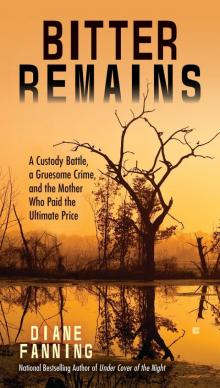 Bitter Remains
Bitter Remains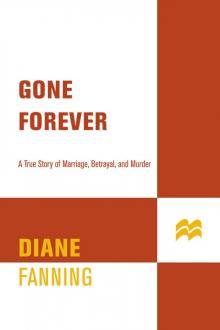 Gone Forever
Gone Forever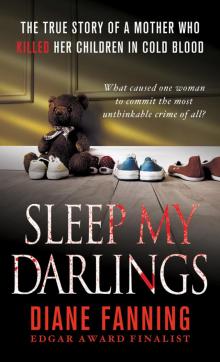 Sleep My Darlings
Sleep My Darlings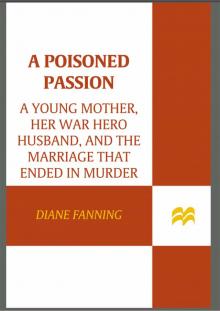 A Poisoned Passion
A Poisoned Passion Through the Window: The Terrifying True Story of Cross-Country Killer Tommy Lynn Sells (St. Martin's True Crime Library)
Through the Window: The Terrifying True Story of Cross-Country Killer Tommy Lynn Sells (St. Martin's True Crime Library) Chain Reaction
Chain Reaction Baby Be Mine
Baby Be Mine The Pastor's Wife
The Pastor's Wife False Front (Lucinda Pierce)
False Front (Lucinda Pierce)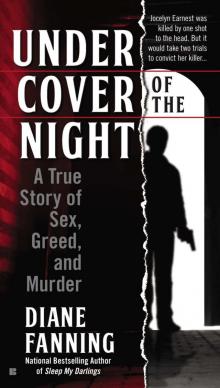 Under Cover of the Night
Under Cover of the Night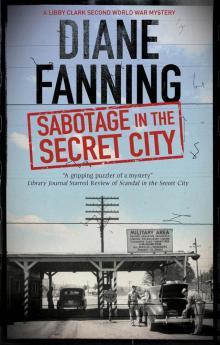 Sabotage in the Secret City
Sabotage in the Secret City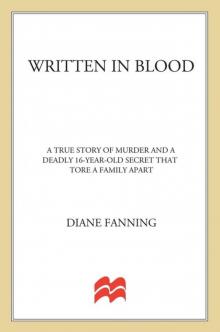 Written in Blood
Written in Blood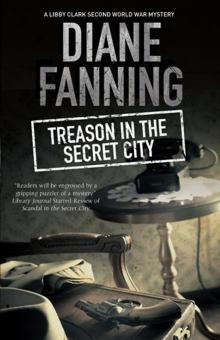 Treason in the Secret City
Treason in the Secret City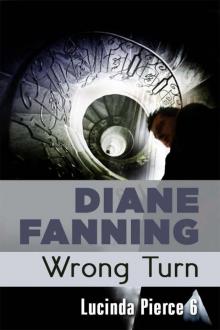 Wrong Turn
Wrong Turn Under the Knife
Under the Knife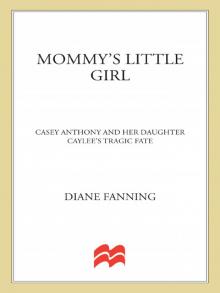 Mommy's Little Girl
Mommy's Little Girl Scandal in the Secret City
Scandal in the Secret City